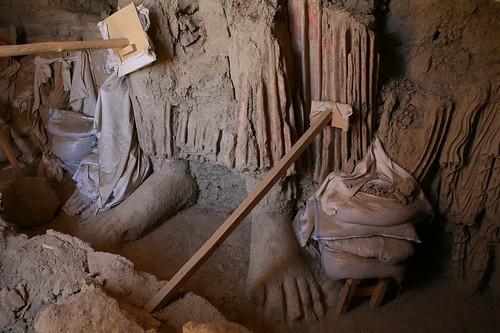The first instance of Buddhism entering Iran seems to have been during the life of the historical Buddha, Sakyamuni, roughly 5/6th century BCE. During the course of this paper, I will seek to examine the spread of Buddhism amongst Iranian people, a subject the significance of which is often overlooked by modern day scholars. The paper begins with a brief background of the region and then examines the circumstances under which Buddhism entered the Persian Empire and how it spread amongst the people of the region.
 |
| New borders divide old India (new-pakistan.com) |
It then looks at the patterns of cross cultural influence and the mark that Buddhism left on Iranians and vice versa. To clarify, the area I am concerned with is not the region of modern day Iran, rather the area of Central Asia inhabited by Iranian people from roughly 500 BCE onwards. This would include modern day Iran,
Tajikistan, Uzbekistan, Afghanistan, as well as parts of
North-West Pakistan and India....
The most obvious example of Iran's influence on Buddhism is to be found in the "
Gandharan" style of art. It developed under the
Kushans and is closely linked with the development of Mahayana Buddhism. Scholars agree with Emmerick (1983) that, "It seems probable that both [development of art as well as development of Mahayana school of thought] arose from the contact between Greek, Iranian, and Indian influences" (Emmerick, RE, "Buddhism amongst Iranian peoples" in: Yarshater, Ed,
Cambridge History of Iran, vol 3.2, Cambridge, CUP).
More 



























